Last Updated on September 27, 2023
Wonder what is calendula good for? Read this overview of calendula healing properties, benefits, and uses for your ultimate well-being and natural health.
Key takeaway: Consider calendula products as your top choice for treating cuts, scrapes, burns, insect bites, bruises, and skin or mouth wounds. Use calendula when you need to reduce inflammation, decrease swelling. or heal a wound.
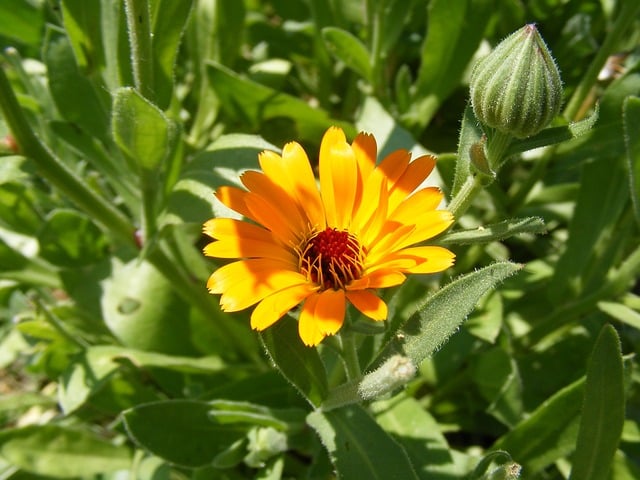
Disclaimer: While I’m deeply passionate about working with healing herbs, it’s essential to note that I am not a licensed medical professional. Therefore, it’s advisable to “consult your doctor” before using any natural remedy.
Calendula, also known as Calendula officinalis, is a simple yet remarkable flower that has been treasured in herbal medicine and skincare for centuries. It’s cherished for its bright, cheerful petals and its remarkable healing properties and myriad of uses
This vibrant flower is a member of the daisy family and can be commonly found in gardens all around the world. The good news is, you can easily grow calendula in your very own garden.
What makes calendula truly special are its petals, which are packed with a wealth of healing properties. These petals contain a rich assortment of bioactive compounds like flavonoids, carotenoids, and essential oils. These natural properties are the hidden gems that make calendula a powerful and therapeutic plant.

*This post contains affiliate links. If you choose to purchase any of the products I have recommended, I may receive a commission at no cost to you.
Calendula Properties
Now, let’s explore the incredible healing properties of calendula:
- Skin Soothing: Calendula’s anti-inflammatory and antimicrobial properties make it a go-to solution for skin irritations, rashes, and minor cuts. When applied as a salve or ointment, it can help calm redness and reduce discomfort.
- Wound Healing: Calendula promotes the regeneration of skin tissues, which aids in faster wound healing. Its natural collagen-forming abilities can be especially helpful for those with slow-healing injuries.
- Anti-Aging: With its antioxidants, calendula helps combat the effects of free radicals on your skin. Regular use can reduce the appearance of fine lines and wrinkles, keeping your skin looking youthful.
- Acne Control: The antimicrobial powers of calendula are a boon for those dealing with acne. It can help clear up blemishes and prevent new ones from forming.
- Relief for Dry Skin: If you struggle with dry, flaky skin, calendula-infused creams and lotions can provide deep hydration, leaving your skin soft and supple.
- Eczema and Psoriasis Relief: People suffering from eczema or psoriasis often turn to calendula for its soothing effect on irritated and itchy skin.
- Insect Bite Relief: Calendula’s soothing properties can provide relief from the discomfort of insect bites, making it a go-to solution for those pesky stings and itchy reactions.
- Burn Relief: Calendula offers effective relief and temporary protection for minor burns resulting from cooking, friction, or sunburns. It also aids in promoting the healing process for these burns.
- Oral Health: Calendula’s antimicrobial properties aren’t limited to the skin. It can also be used as a mouthwash or gargle to help with oral infections and gum issues.
Calendula Officinalis Medicinal Uses
Calendula’s uses extend far beyond skincare. Its versatility shines through in various medicinal applications:
- Digestive Aid: Calendula tea can help ease digestive discomfort, including indigestion and ulcers, thanks to its anti-inflammatory properties.
- Menstrual Comfort: Some women find relief from menstrual cramps by drinking calendula tea. Its muscle-relaxing properties can help alleviate the pain associated with menstruation.
- Immune Booster: Calendula’s antioxidants support the immune system, helping your body ward off infections and illnesses.
- Detoxification: It’s believed that calendula can assist in detoxifying the body by promoting the liver’s natural cleansing processes.
- Eye Health: Calendula’s anti-inflammatory effects can also be harnessed for eye health. It may help soothe irritated eyes and reduce redness.
Calendula Benefits
The benefits of calendula are abundant and diverse, making it a cherished addition to both traditional and modern medicine.
Here’s a summary of why you should consider incorporating calendula into your daily routine:
- Gentle on Skin: Unlike some harsh synthetic skincare products, calendula is gentle and suitable for most skin types, including sensitive skin.
- Natural Healing: Embracing calendula means embracing a natural, chemical-free approach to healing and well-being.
- Affordabie: Calendula products are often more budget-friendly than many commercial skincare and medicinal options.
- Time-Tested: Its use dates back centuries, with historical records showing its presence in ancient cultures like the Egyptians and Greeks.
- Multi-Purpose: Calendula offers a wide range of uses, from topical creams to teas and tinctures, providing versatility for various health concerns.
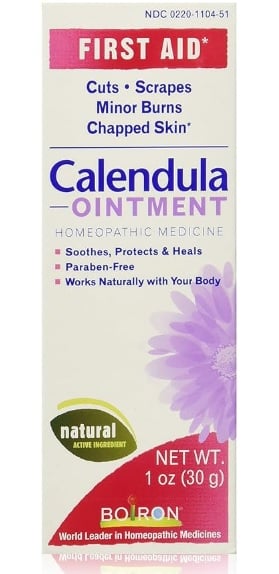
Learn how to make your own calendula remedies at home in this article
Calendula Side Effects
*A note of caution: Be sure not to confuse calendula (Calendula officinalis) with typical ornamental marigolds. Since calendula is sometimes referred to as “pot marigold,” it’s possible for people to get confused.
While calendula is generally safe for most individuals, it’s essential to be aware of potential side effects:
Allergic Reactions: Please be aware that calendula belongs to the daisy family. If you happen to be allergic to daisies, chrysanthemums, or ragweed, it’s advisable to steer clear of calendula.
Pregnancy and Nursing: Pregnant and nursing women should consult with a healthcare professional before using calendula products, as their safety in these situations is not thoroughly studied.
Interactions with Medications: If you’re taking medications, especially blood-thinners or drugs that affect the immune system, consult your healthcare provider before using calendula in medicinal forms.
Latest Scientific Research on Calendula Properties
According to recent scientific studies, calendula (Calendula officinalis) exhibits antioxidant, antiviral, antigenotoxic, hepatoprotective, antibacterial. antifungal, anti-inflammatory, and wound healing properties.
A thorough review of pharmacological aspects of calendula states:
C. officinalis Linn. (Pot marigold) has been traditionally used in the treatment of inflammations of internal organs, gastrointestinal ulcers and dysmenorrhea and as a diuretic and diaphoretic in convulsions. It is also used for inflammations of the oral and pharyngeal mucosa, wounds and burns. Calendula is a cleansing and detoxifying herb and the infusion treat chronic infections. The dried flower heads have been used for their antipyretic, anti-tumor and cicatrizing effects. Topical application of infusion of flowers is used as antifungal and antiseptic in wounds, marks, freckles, sprain and conjunctivitis. Calendula tea is used as eyewashes, gargles, diaper rashes and other inflammatory conditions of the skin and mucous membranes. Mother tincture of C. officinalis is used in homeopathy for the treatment of mental tension and insomnia.
WebMD website also provides a list of calendula medicinal uses. It mentions that calendula is used for treating sore throat and mouth, menstrual cramps, stomach ulcers, measles, smallpox, and jaundice. It states that calendula is applied to the skin to reduce pain and swelling (inflammation) and to treat poorly healing wounds and leg ulcers. It is also applied to the skin (used topically) for nosebleeds, varicose veins, hemorrhoids, ear infection, gum disease, peeling lips, diaper rash, and conjunctivitis.
Final Thoughts on Calendula Healing Properties
Calendula, with its impressive properties and extensive list of uses, is truly a gift from nature. Whether you’re seeking a gentle remedy for skin issues, looking to enhance your well-being, or simply curious about natural alternatives, calendula has something to offer. However, it’s essential to use it responsibly and be aware of any potential side effects.
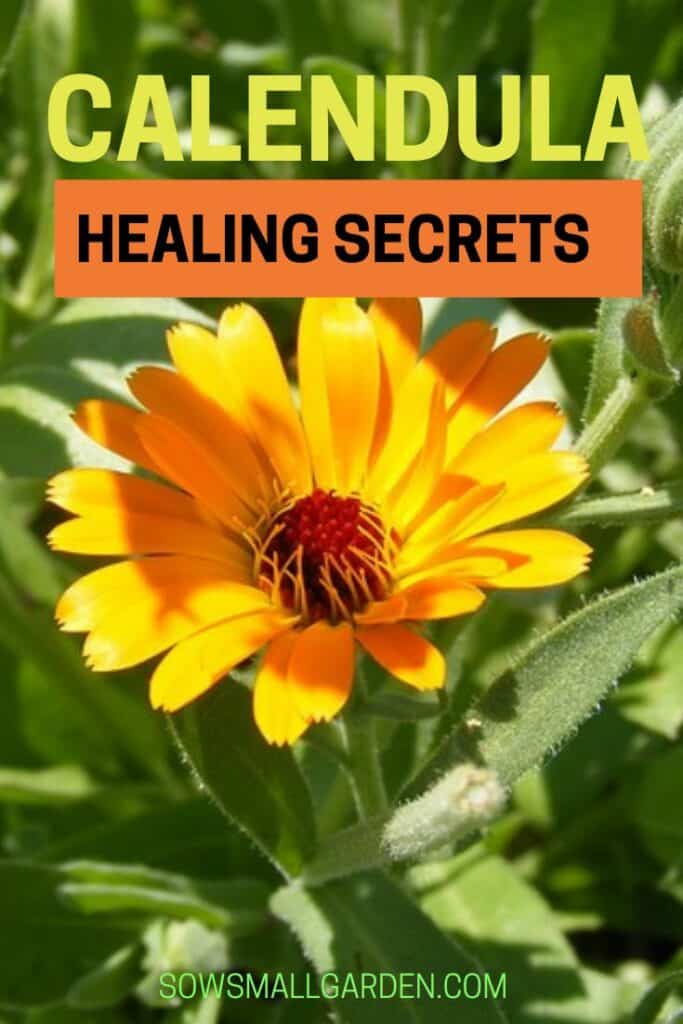
Read related:
Learn more about homemade natural remedies



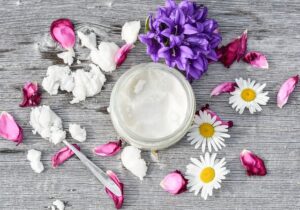
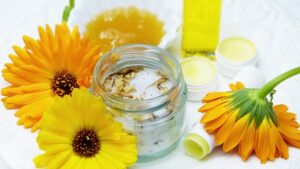
Wow. So many benefits. Never heard of this flower. I’m excited to grow this.
Yeah! Do it, Jessica. You will not be disappointed. 🙂 Calendula flower is very easy to grow and use for natural healing.